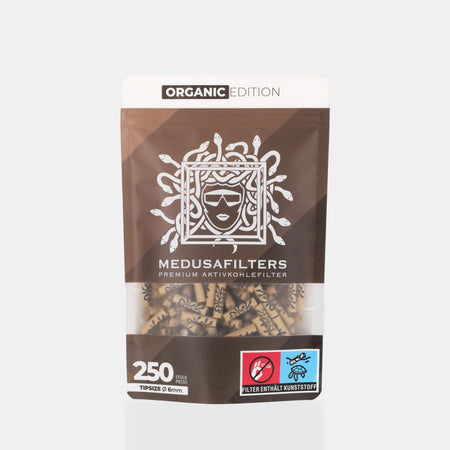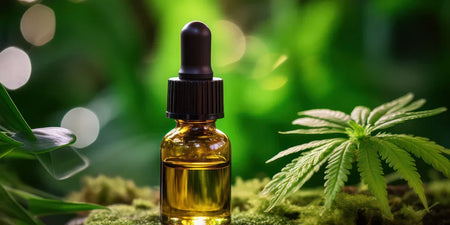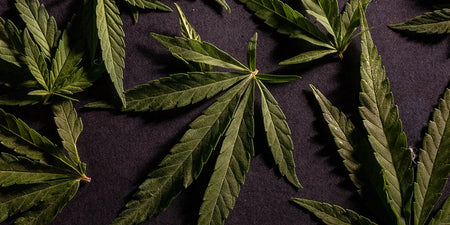Everything you need to know about cannabis strains
The most important thing on the topic
Basic knowledge about the hemp plant
Immerse yourself in the diversity of the hemp plant. From use as a fiber plant to medicinal purposes and consumption as a psychoactive substance.
Read moreDifferences between cannabis strains
There are significant differences due to the centuries of cultivation and breeding of cannabis. Find out more about it in this section.
Read moreCannabis hybrid, sativa and indica
Discover the special features of Cannabis Hybrid, Sativa and Indica.
Read moreBasic knowledge about the hemp plant
The hemp plant, scientifically known as Cannabis sativa, belongs to the Cannabaceae family and has been part of human culture for thousands of years. Their uses range from use as a fiber plant to medicinal purposes and consumption as a psychoactive substance.
Biological characteristics: Cannabis sativa is an annual, dioecious plant, meaning that there are both male and female plants. It is characterized by long, narrow leaves and a robust stem structure. The plant can reach a height of up to 5 meters under optimal conditions.
Cannabinoid Profiles: The main chemical components of cannabis are the cannabinoids, of which tetrahydrocannabinol (THC) and cannabidiol (CBD) are the most well-known. THC is responsible for the psychoactive effects, while CBD has no intoxicating effects and is receiving attention in research for its potential therapeutic properties. However, there are over 100 different cannabinoids, whose interaction and specific effects are the subject of current research.
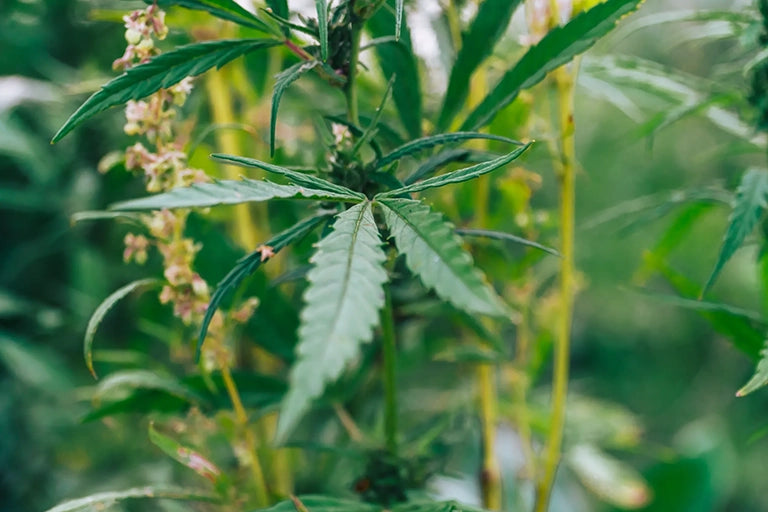
Cultivation and Breeding: Cultivation of cannabis varies depending on its intended use. Industrial hemp, grown for fiber, seeds and oils, has low THC levels and is preferred for its high biomass and rapid growth. In contrast, plants high in THC or CBD are bred specifically for medicinal or recreational purposes.
Historical Use: Historically, cannabis has been used in various cultures for medicinal, ritual and recreational purposes. The oldest known records come from China and India, where it was used as a medicinal plant and in religious rituals.
Legal Status: The legal status of cannabis varies significantly around the world. In some countries, the cultivation and consumption of cannabis for medical purposes is legalized, while in others it remains illegal or is only permitted under strict conditions. These legal differences reflect the complex nature of the plant and the differing views on its use.
Accessories for all cannabis strains
How many strains of cannabis are there?
Determining the exact number of cannabis strains is challenging because the plant has a long history of cultivation and breeding. Traditionally, three main types of cannabis are distinguished: the sativa plant, Cannabis indica and Cannabis ruderalis, with each type having its own characteristic characteristics and growing conditions. Modern breeding methods have crossed many of these cannabis species, resulting in the creation of a variety of hybrids and continually contributing to new strains.
Estimates of the number of cannabis strains in existence vary considerably. There are hundreds, perhaps even thousands, of strains known in the cannabis community. These are often named according to their predominant properties or origin, such as 'Sour Diesel', 'Purple Haze' or 'Afghan Kush'. Each strain has an individual profile of cannabinoids such as THC and CBD, as well as terpenes, which are responsible for the aroma. This chemical composition influences both the effects and sensory experiences associated with each strain.
The number and diversity of cannabis strains is also the result of the adaptive nature of the plant. Cannabis, particularly the sativa plant, has adapted to different environments and growing conditions, resulting in natural diversity among wild populations. Therefore, the exact number of cannabis varieties cannot be determined because new varieties are constantly being created through targeted breeding and natural variation. This genetic and chemical diversity makes cannabis a complex and fascinating area of research in botany and phytochemistry.
Cannabis hybrid, sativa and indica
In the diverse world of cannabis, there are numerous cannabis strains that vary in different aspects. The most common categories are Cannabis Sativa, Cannabis Indica and their resulting hybrids. Each of these plant species - be it indica or sativa - presents itself in a unique form of cannabis.
The well-known cannabis strains include representatives of both the indica and sativa categories. Each cannabis strain has its own characteristic properties that make it interesting for different applications.
Sativa vs Indica

Growth habit:
- Cannabis Sativa: Tall and slim.
- Cannabis Indica: Shorter and bushier.
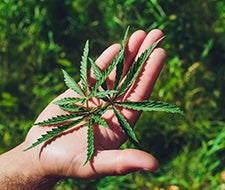
Leaves:
- Cannabis Sativa: Long and narrow.
- Cannabis Indica: Broad.
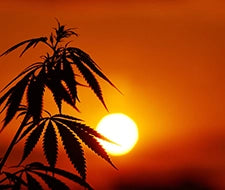
Growth climate:
- Cannabis Sativa: Prefers warm climates.
- Cannabis Indica: Adapted to cooler climates.
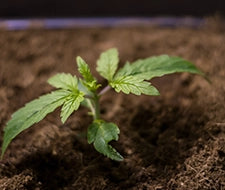
Flowering time:
- Cannabis Sativa: Longer flowering time.
- Cannabis Indica: Shorter flowering time.
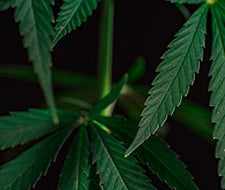
Cannabinoid ratio
- Cannabis Sativa: Often a higher THC to CBD ratio.
- Cannabis Indica: Tends to have a more balanced ratio or higher CBD content.

Typical effect:
- Cannabis Sativa: Traditionally believed to be stimulating and mentally euphoric.
- Cannabis Indica: Traditionally believed to be relaxing with physical sedation.
Area of application:
Cannabis Sativa: Traditionally for mental activity and creativity.
Cannabis Indica: Traditionally for relaxation and calming.
You can also use our products for CBD joints and CBD cigarettes
Hybrid varieties
In the world of cannabis, hybrids are of great importance as they are the result of crossing two different cannabis strains, often a combination of sativa and indica. Popular examples of such hybrids include White Widow and OG Kush, each of which exhibits specific characteristics of their parent strains. The goal of breeding hybrids like these is to combine and enhance specific characteristics such as aroma, potency and effects to create a strain of cannabis that is precisely tailored to the needs and preferences of weed users.
These hybrids contribute to remarkable genetic diversity within cannabis plants. This diversity is crucial for the ability of plants to adapt to different growing conditions and enables the development of unique characteristics. Crossing the genetic characteristics of the parent plants creates hybrids with specific cannabinoid ratios and unique aroma profiles not found in pure sativa or indica strains.
The exact number of hybrid varieties in the cannabis sector is difficult to determine because new varieties are constantly being created through innovative breeding techniques. Hybrids are often classified as sativa-dominant, indica-dominant, or balanced based on the characteristics inherited from the parent strains. This classification helps users better understand the type of effect and growth behavior of the plant.
Thus, hybrids represent the ongoing evolution and innovation in the field of cannabis. They offer the opportunity to develop tailored weed strains with specific characteristics, making them a central aspect of modern cannabis cultivation and use. Its diversity and complexity make it an exciting and dynamic field of research.
Differences between cannabis strains
The diversity of cannabis strains is the result of centuries of cultivation and breeding. These varieties differ in several key aspects, including their botanical properties, chemical compositions and their effects.
Botanical Characteristics: Sativa plants are typically taller with narrow leaves, while indica plants are shorter and bushier with wider leaves. These botanical differences are often a first clue for breeding and classifying varieties.
Cannabinoid and terpene profiles: A crucial factor that differentiates cannabis strains is their cannabinoid and terpene profile. Cannabinoids such as tetrahydrocannabinol (THC) and cannabidiol (CBD) vary in concentration between strains. THC is known for its psychoactive properties, while CBD is non-psychoactive and is being studied in scientific research due to its potential in various applications. Terpenes, which are responsible for the smell and taste of the plant, also contribute to the uniqueness of each strain.
Effects: The combination of cannabinoids and terpenes in a strain influences its potential effects. The differences are partly due to the ratio of THC to CBD as well as the specific terpene profile.
Breeding and Application: Breeders create new strains to enhance certain characteristics, be it greater resistance to environmental conditions, specific cannabinoid ratios, or unique flavors. The selection and use of a strain can therefore vary depending on the desired effect or area of application.
Finest feminized varieties
Feminized cannabis strains are characterized by a special breeding process that produces almost exclusively female plants. This is crucial because female plants are responsible for flower production, while male plants primarily produce seeds.
The development of these strains has made cannabis cultivation more efficient. Growers no longer have to separate male plants from female plants, which simplifies cultivation and improves yield and quality of the crop. Feminized strains are created using methods such as silver thiosulfate treatment to promote exclusively female flowers.
These strains offer a variety of flavors and cannabinoid profiles, from THC-dominant to balanced THC-CBD ratios. Its consistency and predictability make it popular among recreational and medical users.
Feminized cannabis strains have revolutionized cannabis cultivation and contribute to the diversity and availability of high-quality products. They are an essential part in the development of cannabis cultivation and research.
Autoflowering strains
Autoflowering cannabis strains are characterized by their unique ability to automatically enter the flowering phase, regardless of changes in the light cycle. They owe this property to the genetic cross with Cannabis ruderalis, a type of cannabis that is characterized by its natural autoflowering properties.
Unlike traditional strains, which rely on photoperiod – a certain number of hours of light for growth and flowering – autoflowering strains typically begin flowering within a few weeks of germination. This allows growers to harvest more quickly and potentially achieve multiple harvests per year.
The compact size of autoflowering plants makes them ideal for growing in limited spaces. They are also often more resilient to environmental influences and pests, making them a good choice for beginner cannabis growers.
The range of autoflowering strains available has expanded significantly in recent years, with variations in aroma, potency and cannabinoid profiles. This development makes autoflowering cannabis an attractive option for a variety of cultivation and uses, from recreational use to experimental cultivation.
CBD-rich strains
CBD-rich cannabis strains have become increasingly important in recent years. CBD (cannabidiol) is one of the many cannabinoids in the cannabis plant and is known for its non-psychoactive properties. Unlike THC (tetrahydrocannabinol), the main ingredient in many traditional cannabis strains that is responsible for the psychoactive effects, CBD offers a different profile that is appreciated by many users.
These strains are specifically bred to achieve high CBD levels while maintaining low THC levels. This makes her a preferred choice for those seeking the potential benefits of cannabinoids without the psychoactive effects of THC.
In terms of cultivation and appearance, CBD-rich strains are similar to other cannabis strains. They can be grown in different climates and vary in size, shape and flowering time.
The popularity of CBD-rich strains reflects the growing interest in the various cannabinoids of the cannabis plant and their potential role in various applications, while always respecting the legal framework.
Medical cannabis strains
Medical cannabis strains refer to specific varieties of cannabis that are cultivated and used in the context of medicinal use. These strains are often chosen for their specific cannabinoid and terpene profile, which can include varying ratios of THC (tetrahydrocannabinol) and CBD (cannabidiol), as well as other cannabinoids and terpenes.
Unlike traditional cannabis strains, which are often bred for their THC content and associated psychoactive effects, medicinal strains more often focus on a more balanced THC to CBD ratio or higher CBD content. CBD is known for its non-psychoactive properties and is being studied in scientific research due to its potential in various applications.
Choosing a medical cannabis strain often depends on the individual's specific needs and response. Some users prefer strains with higher CBD content to minimize psychoactive effects, while others prefer a balanced THC/CBD ratio for their specific conditions.
Medical cannabis strains are grown under controlled conditions to ensure consistent quality and cannabinoid concentration. Cultivation of such varieties is often carried out in accordance with legal requirements and medical standards to ensure that patients have access to safe and standardized products.
It is important to consider the use of medical cannabis in consultation with medical professionals, especially because of the individual effects and the legal framework in different regions. Medical cannabis strains represent an important and growing area of cannabis research and offer potential applications in various medical contexts.
You can find out more about CBD here
Further questions
Hemp and marijuana are both variants of the plant species Cannabis Sativa, but differ in their THC content. Hemp, often referred to as industrial hemp, contains very small amounts of THC and is used for industrial purposes such as the production of fiber, oils and seeds. Marijuana, on the other hand, has a high THC content and is mostly used for medical or recreational purposes.
Most cannabis strains, particularly the sativa and indica types, are photoperiodic, meaning their flowering is dependent on the light cycle. They require specific lighting conditions to transition from the growth to flowering phase. However, there are also autoflowering strains that automatically enter the flowering phase regardless of the light cycle.
Hemp seeds play a central role in cannabis cultivation. They serve as a starting point for cultivating various strains of cannabis, including medicinal and recreational varieties. Through selective breeding practices, breeders can use hemp seeds to promote desired traits such as high THC levels or specific terpene profiles.
Jamaica is known worldwide for its rich cannabis culture. This is due in part to the ideal climate for cannabis cultivation and the long history of cannabis use in religious and cultural practices. The island is famous for its high quality weed strains, dominated by the Sativa variety and known for their strong and unique character.








































